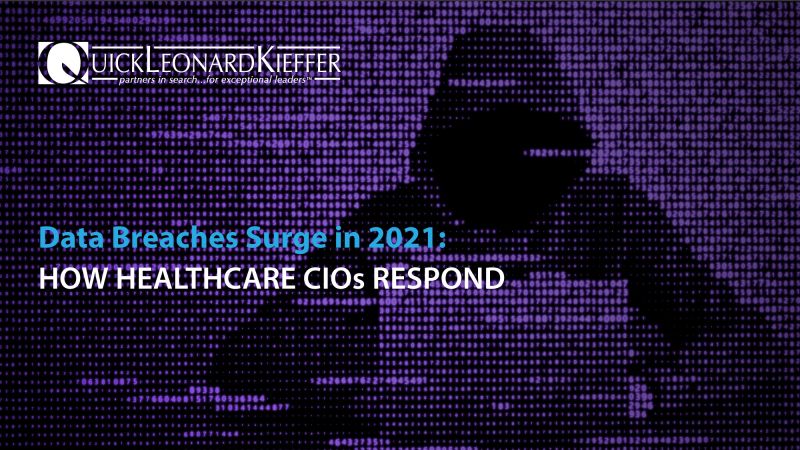Outside of the COVID-19 paradigm in which we all still exist, patients’ physical and mental well-being is and will remain the number one priority in healthcare—related and unrelated to the coronavirus and associated strains. Providing successful care necessitates honing a data infrastructure that helps you create the most optimized treatment plans and improve your outreach.
Living in the information age means you’re dealing with more patient data than ever—with that comes the power to take your organization to new heights.
The caveat?
As the old cliché goes, with great power comes even greater responsibility. The overflow of data you’re dealing with carries with it far more risks than before.
Speaking to the above notion is the reported 45% increase in cyber attacks since November 2020—a direct link to the pandemic.
What can your CIO do to protect delicate information and prevent cybercriminals from victimizing your organization? This blog will examine a few options:
Craft an Insightful Plan
Wiith cyberattacks ramping up in 2021, it’s time to amp up your approach.
Here’s an example to learn from:
The 2017 NotPetya cyberattack brought worldwide digital systems to a halt. This damage extended to healthcare organizations and medical transcription services.
Nuance – a medical transcription company – fell victim to the attack, meaning organizations such as Sutter Health were at a caregiving standstill. Keep in mind, NotPetya’s chaos extended to high-level corporations and government agencies.
Fortunately, for Sutter Health, they had planned for such an occasion. As such, they migrated their systems and data where necessary almost immediately. Despite being stuck with a transcription backlog, they managed to escape relatively unscathed.
Cybercrimes aren’t always preventable. However, with robust contingencies in place, potential catastrophes turn into relatively minor hiccups.
Leverage Artificial Intelligence
Fighting fire with fire is non-negotiable when it comes to protecting sensitive data in the healthcare industry.
Cybercriminals utilize some of the most premier technology out there, choosing to use it for malignant means. The only way to combat this is with better, more intuitive tech—namely, Artificial Intelligence.
Veering back to the example in the previous section about the NotPetya attack, Sutter Health’s AI warned the company in the nick of time. This allowed them to run successful damage control.
Sutter Health dealt with 87 billion cyberattacks in 2018. That’s a little too lofty for humans to detect and prioritize. AI can deal with mountains of data and suss out attacks almost instantaneously. Whether your organization serves 3 million patients like Sutter or you’re smaller, this high-end tech holds the keys to optimized cybersecurity.
Engineers and coders get tagged by AI virus protection once a potential issue is flagged, allowing them to implement patches and update blocklists. They can also figure out and execute other preventative actions.
Lastly, note that AI doesn’t cancel out your need for humans; it merely helps them do their job better.
Stay Informed About Ransomware
At the Maricopa Medical Center, trainees use diagnostic equipment (e.g., CT scanners to resuscitate simulated patients). During one exercise, they face a ransomware lockout message that demands Bitcoin payments. Without paying the “ransom,” they won’t be able to use the equipment again.
Fortunately, that’s a simulation. But these are the types of things that can happen in real life scenarios. And it highlights why Ransomware presents one of the most significant threats in the industry.
The ubiquitous nature of the Internet of Things (IoT) provides plenty of advantages, but its risks are just as prevalent. With that said, here are a couple of ways to mitigate potential ransomware attacks:
- Test employees with simulated phish emails to see if they’re vulnerable to such attacks.
- Ensure all data is secured and backed up frequently. This way, access can be restored after a third-party attack where someone tries to lock you out and extort payment.
We’re only scratching the surface on how you can approach these cyberattacks. Another way to ensure your organization’s successful data protection is by hiring a CIO who’s one step ahead of cybercriminals. You can find that high-performing candidate by contacting QLK today.


